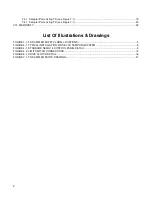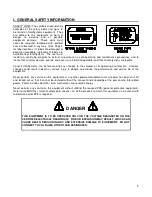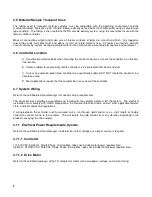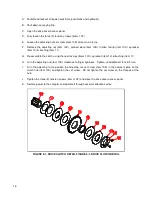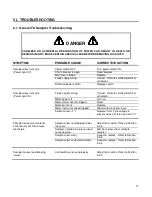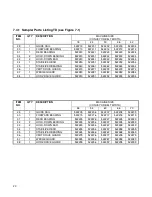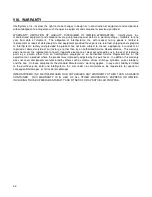
8
3.5 Material Sample Transport Lines
The tubing used to transport material samples must be compatible with the operating environment and the
material sampled. Typically a 3.00 OD rigid tubing is directly connected to the sample outlet using a compression
type coupling. The tubing is then routed to the SD sample delivery system using the most direct route with the
fewest number of bends.
Make all connections airtight and make sure all interior surfaces of joints are smooth and flush. Any ragged or
raised tube ends will collect dust and debris as well as retard material flow. Air leaks can interfere with the
vacuum conveying system. Escaping sample material can contaminate surrounding atmosphere and equipment.
3.6 Controller Location
A. Use vibration isolation pads when mounting the control enclosure or mount the controller in a vibration-
free location.
B. Unless ordered for severe duty, locate controller so it is protected from water and dust.
C. Unless an explosion-proof rated controller was specifically ordered, DO NOT locate the controller in a
hazardous area.
D. Most applications require that the sampler be in easy view of the controller.
3.7 System Wiring
Refer to the certified electrical drawing(s) for specific wiring requirements.
The controller was completely assembled and tested with the sampler before it left the factory. The electrical
installation must comply with OSHA Regulations; the National Electrical Code; and all other applicable federal,
state, and local codes and regulations.
If wiring between the controller and the sampler unit is run through rigid conduit, use a short length of flexible
conduit to connect wiring to the sampler. This will isolate the rigid conduit from any vibration originating in the
product conveying line and sampler.
3.7.1 Electrical Power Requirements, System
Refer to the certified electrical drawing(s) to determine if other voltages or a larger service is required.
3.7.1.1 Controller
110/120 VAC, 50/60 Hz, Single Phase, 10 Amp Max. (does not include motor power requirements).
Optional - 220/240 VAC, 50/60 Hz, Single Phase, 5 Amp Max. (does not include motor power requirements).
3.7.1.2 Drive Motor
Refer to the certified drawing(s) of the TD sampler for motor size, horsepower, voltage, and current rating.



